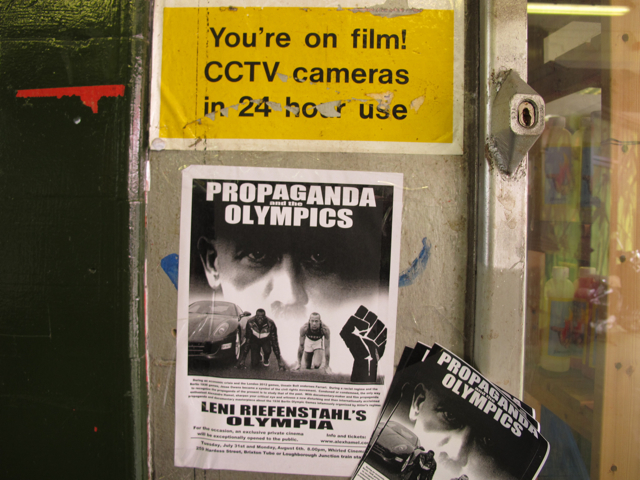Danny Boyle’s Trance tells the story of a heist in order to perform one, taking advantage of moviegoers’ suggestible state of mind. When the story comes to an end, we find ourselves wondering what happened and to what degree we are responsible. The message we thought we were getting has vanished and a more troubling one has taken its place.
Needless to say, this is not the sort of film one can write about without giving away the plot. This presents critics with an ethical quandary. To comprehend the full power of Trance requires experiencing it without foreknowledge. But part of what makes the story so complex is that it calls the very idea of innocence into question. Purity is an effect, something we bring about by rejecting the state of nature. Just because we believe we are seeing something for the first time doesn’t mean that we are. The very things that strike us as brand new are often the repository for a past we refuse to acknowledge.
That’s a deep insight, richly interwoven with the best of the psychoanalytic tradition. Yet it comes packaged, fittingly, in the raiment of “pop.” Anyone who has spent time in therapy can testify to how hard it is to make significant progress. Months, even years will go by without a major revelation. In Trance, by contrast, the protagonist finds exactly what he needs in a matter of days. It seems laughably easy.
But this absence of friction — a slickness reinforced in shot after shot of glass surfaces, in which the divide between inside and outside, fiction and reality is impossible to discern — is treacherous indeed. The minute we think we’ve reached solid footing, overconfidence is liable to send us tumbling. As Trance’s stylish images streak by, the urge to press “Pause” grows stronger. And that’s precisely why it’s the sort of film that needs to be seen in a theater, when the audience is completely at its mercy.
Trance opens with an extended sequence narrated by a well-dressed man, played by James McAvoy, who will later be identified as Simon. He works at an auction house very much like Christie’s or Sotheby’s. Sometimes staring affably into the camera, but mostly through voice-over, he discusses how major art world thefts used to be pulled off — simple “muscle” — and then goes on to note how much more difficult they have become thanks to heightened security measures.
While Simon is having his turn as Trance’s narrator, he talks about Rembrandt’s Storm on the Sea of Galilee, one of the world’s most famous “lost” paintings. Many of the works that fall into this category disappeared during World War II and are presumed to have been destroyed. But the Rembrandt was stolen from the Gardner Museum in Boston, Massachusetts in 1990 during a bold heist. In other words, it provides the model for what will happen to Francisco Goya’s 1798 Witches in the Air later in the film.
Interestingly, Witches in the Air belongs to the Prado in Madrid. Trance asks us to believe that this national treasure is being sold, presumably to pay down some of the crippling debt with which Spain is currently contending. None of this is explicit. The film’s three main characters all live in astonishingly chic circumstances, given the price of living in London. And there is nary a sign of class differentiation in Britain. Yet this “secret” history of the painting alerts us to the possibility that Trance might contain other packages for us to unwrap, whose contents will be more commensurate with the realities of global existence
At this point, the story proper commences. Shots of the bidding on Witches in the Air are intercut with ones showing a robbery in progress. Shortly after the work sells for the tidy sum of 27.5 million Pounds, the parallel actions converge. Simon proceeds to do exactly what he said should be done in the event of an attempted theft, grabbing the most valuable work he can lay his hands on, the Goya, and spiriting it away to a seemingly safe location.
However the lead thief, Vincent Cassel’s Franck, is waiting for him at the drop slot with a shotgun. Despite having repeatedly intoned the corporate policy against being a “hero”, Simon bravely stands up to Franck, grabbing a guard’s stun gun and sending the robber crumpling to the floor. But Franck’s immobilization is brief. He pull himself up and delivers a vicious blow to Simon’s head with the shotgun. Simon falls to the ground unconscious and Franck escapes with the painting.
Or so he thinks. Once Franck makes it back to the safety of his swank apartment, he opens the bag in which it has been stashed away to discover that he is the not-so-proud possessor of an empty frame. Witches in the Air is elsewhere. This is the first example of a bait-and-switch operation that Trance will perform over and over. Franck and his gang are incensed and vow to get even with Simon, not because he was a “hero” intent on keeping the painting out of criminals’ hands, but because he has double-crossed them. Simon, it turns out, was the gang’s inside man.
Because he appeared to resist, however, the severely injured Simon is lionized by the media, much like Travis Bickle in Taxi Driver. This no doubt enrages Franck and his gang even more. The minute Simon is finally discharged from the hospital, they are waiting for him. Ironically, though, the head injury that transformed him from would-be criminal into a hero has also made him forget where he stashed the painting.
When torturing Simon proves fruitless — this is not a film for the squeamish — Franck turns to the doctor who treated him during his convalescence. Told that no drug will make an amnesiac suddenly remember and desperate for a solution, he decides to have Simon undergo hypnosis, even though he is suspicious of the practice himself.
This is how we come to meet Trance’s third principal character. Franck presents Simon with a list of hypnotherapists and asks him to pick one. Simon chooses Elizabeth Lamb, an attractive woman with light brown skin played by the American actress Rosario Dawson. When Franck demands to know why Simon has chosen her, he replies that he simply likes the name. Elizabeth soon gets caught up in the heist narrative, abandoning the doctor-patient relationship to become a de facto member of Franck’s gang. From there, the action builds to a dizzyingly complicated climax, both narratively and sexually, as both men fall for Elizabeth, who plays them off against each other with aplomb.
What matters most for understanding Trance’s ideological significance are two factors: Elizabeth’s racial background — ambiguous, but unequivocally non-white — and her profession. Although she turns out to be an extremely strong female character, who refuses to be exploited by men and consistently seeks to turn the tables on them, she bears the stigma of transgression as a consequence. Anyone who can enthrall a man that easily is clearly a threat to masculine domination. But her coloration suggests that she is a threat to white supremacy as well.
As the film’s opening minutes cheekily remind us, heroism is an outdated concept. Hearing Simon’s narration at the beginning may prod us to identify with him — even a deceased cad like Joe Gillis in Sunset Boulevard can win audiences over by telling his story — but that connection is repeatedly undermined as the story moves forward. The fact that Simon doesn’t get to speak directly to the audience again confirms what the trajectory of his character communicates: he is hardly your standard protagonist.
Given the fact that Franck is a criminal with violent tendencies, the void opened up by Simon’s descent into anti-heroism would seem, at first glance, to be perfectly suited for Elizabeth. Yet while we may take pleasure in her cleverness and root for her to survive, something holds us back from strongly identifying with her. Her own rapid fall from trustworthy hypnotherapist to ruthless accomplice happens so quickly and with so little apparent motivation or remorse that she takes on the aspect of the “fallen” woman, though one who knows how to maneuver very adroitly once freed from the burden of her innocence.
In short, as Danny Boyle has confessed, Elizabeth is meant to be a femme fatale, even if her reasons for going “bad” end up proving more complex than they originally seem to be. Because she assumes this role in a triangle with two white men, her otherness becomes a cipher for danger. And unlike many femmes fatales from classic postwar film noirs, whose liberty of movement is severely constrained, Elizabeth is able to realize her full potential as an agent of destruction.
This is what makes Trance such a disturbing film in the end, particularly for those of us familiar with Siegfried Kracauer’s landmark 1947 book From Caligari to Hitler. To be sure, Kracauer’s thesis — that one could trace a direct line from films like The Cabinet of Dr. Caligari to the Nazis’ ascendance — is tendentious. But the Holocaust seemed to justify such sweeping generalizations.
Even if you are unwilling to endorse Kracauer’s conclusions without reservation, however, it is hard to argue with the evidence he marshals in order to demonstrate Germans’ willingness to believe in demagogues, whether portrayed as villainous like the master hypnotist Caligari or heroic like Hitler. Downtrodden and anxious, Germans sought to locate the control they had lost over their affairs in personages of exceptional and, in some cases, supernatural character. Kracauer discerned this fundamentally undemocratic impulse throughout Weimar society.
Danny Boyle was probably not thinking of the connection between Elizabeth’s character and the notorious Caligari. But his decision to put hypnotherapy front and center and have a woman of color demonstrate its power over white men nonetheless invites a comparison. In both cases, we are dealing with characters marked by alterity, whose power seems to derive from their difference from the norm. If Caligari served as a stand-in for the minorities regarded with suspicion in German society, then Elizabeth’s generic otherness — she sounds American, but often looks South Asian in the film — could function similarly.
I don’t mean to imply that Elizabeth is portrayed anywhere near as negatively as Caligari or his relatives in Weimar Republic cinema. What concerns me is the way Trance elevates her to the status of prime mover. Because in a world where power is increasingly concentrated in the hands of a minuscule elite, one that still happens to be overwhelmingly white and male, stories in which a woman of color seems to be pulling all the right strings have the potential to distract audiences from the real source of their problems and suggest scapegoats for them to target. We are, after all, living in times when many citizens of the most powerful countries in the world, the United Kingdom and United States included, continue to believe in conspiracies that can be authoritatively disproved in a matter of seconds.
Like the film, I’ve drifted a long way from where I started. That’s why it’s important to double back and ask whether the heist narrative that sets Trance in motion is purely a red herring, as some critics have asserted, or matters at a deeper level. Aside from hinting at economic disparities that the film otherwise ignores, is Witches in the Air more than just an extremely valuable work of art? The head auctioneer begins the bidding by describing Goya as a founder of modern art and the first painter to focus on portraying what the mind perceives, as opposed to what objectively exists. Certainly, this notion fits nicely with the way Trace keeps us guessing about what is and isn’t real.
From my perspective, though, the painting’s most important function in the film is bound up with another bait and switch. Early on, when Simon returns from the hospital to find his apartment torn inside out by Franck’s gang, he reaches down into the mess on the floor to pick out a coffee table art book. A Post-It marks the place where a page has been violently ripped out. A first-time viewer is likely to assume that the missing image is of Witches in the Air. I know I did.
But as we learn from a flashback later in the film, the page actually featured another famous painting by Goya, the Naked Maja, which Simon rails against for introducing pubic hair into the representation of the female body. It turns out that Elizabeth was both Simon’s therapist — he came to her for help with a gambling addiction — and lover prior to the events of the film. During the scene in question, she responds to his critique of the painting by tearing the out of the book, balling it up and playfully hurling it at Simon as she tells him that she understands what he wants. That formulation echoes one she uses in the post-heist chronology, when she puts off having sex with him to go shave herself.
Elizabeth, who turns out to have been both Simon’s therapist and lover prior to the robbery, tears it out, balls it up and playfully hurls it at Simon as she tells him that she understands what he wants. That formulation echoes one she uses in the post-heist chronology, when she puts off having sex with him to go shave herself.
Obviously, there is a great deal to unpack here from a psychoanalytic standpoint. What stands out to me, however, is the implication that Witches in the Air somehow communicates the latent content of the Naked Maja, which is lost to Simon if not the world of art. It stands for women in a state of nature, rather than the “pure” one he prefers.
While Trance does not endorse Simon’s worldview in the end — he seems increasingly monstrous as the story unfolds — it leaves Elizabeth in the role of femme fatale, a threat to the social order. The final scene of the film shows us Franck watching Elizabeth on an iPad she has sent him from self-imposed exile, the painting hanging on the wall behind her. She is identified, in short, with witchcraft. Like Caligari, she possesses the power of enchantment. Or, if you still subscribe to Max Weber’s secularization thesis, the power of reenchantment. Either way, she embodies what men fear because it robs them of control.
Trance screenshots courtesy of Fox Searchlight. All rights reserved. Goya images courtesy of Wikimedia. Published under a Creative Commons license.







